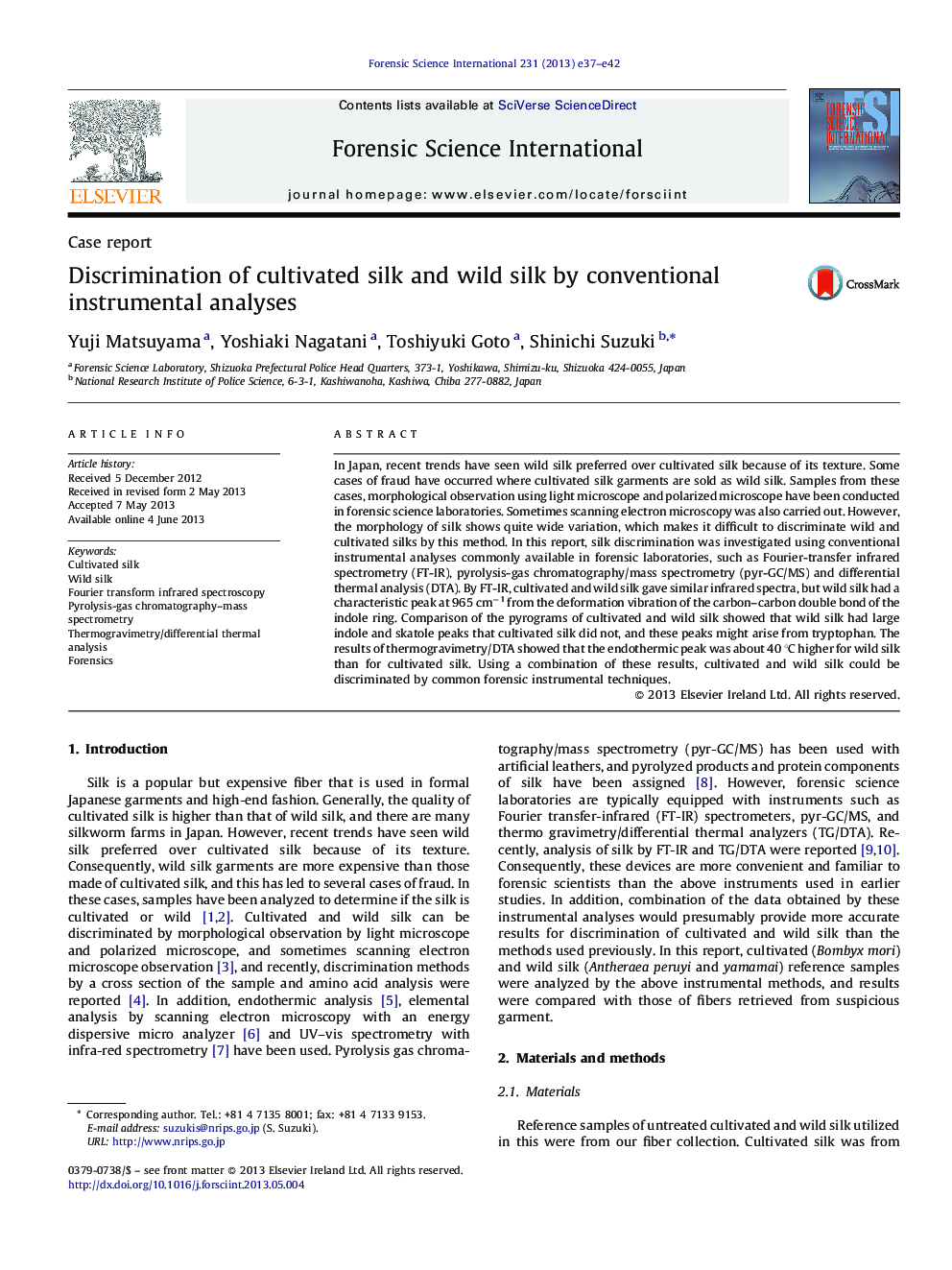| Article ID | Journal | Published Year | Pages | File Type |
|---|---|---|---|---|
| 95882 | Forensic Science International | 2013 | 6 Pages |
In Japan, recent trends have seen wild silk preferred over cultivated silk because of its texture. Some cases of fraud have occurred where cultivated silk garments are sold as wild silk. Samples from these cases, morphological observation using light microscope and polarized microscope have been conducted in forensic science laboratories. Sometimes scanning electron microscopy was also carried out. However, the morphology of silk shows quite wide variation, which makes it difficult to discriminate wild and cultivated silks by this method. In this report, silk discrimination was investigated using conventional instrumental analyses commonly available in forensic laboratories, such as Fourier-transfer infrared spectrometry (FT-IR), pyrolysis-gas chromatography/mass spectrometry (pyr-GC/MS) and differential thermal analysis (DTA). By FT-IR, cultivated and wild silk gave similar infrared spectra, but wild silk had a characteristic peak at 965 cm−1 from the deformation vibration of the carbon–carbon double bond of the indole ring. Comparison of the pyrograms of cultivated and wild silk showed that wild silk had large indole and skatole peaks that cultivated silk did not, and these peaks might arise from tryptophan. The results of thermogravimetry/DTA showed that the endothermic peak was about 40 °C higher for wild silk than for cultivated silk. Using a combination of these results, cultivated and wild silk could be discriminated by common forensic instrumental techniques.
